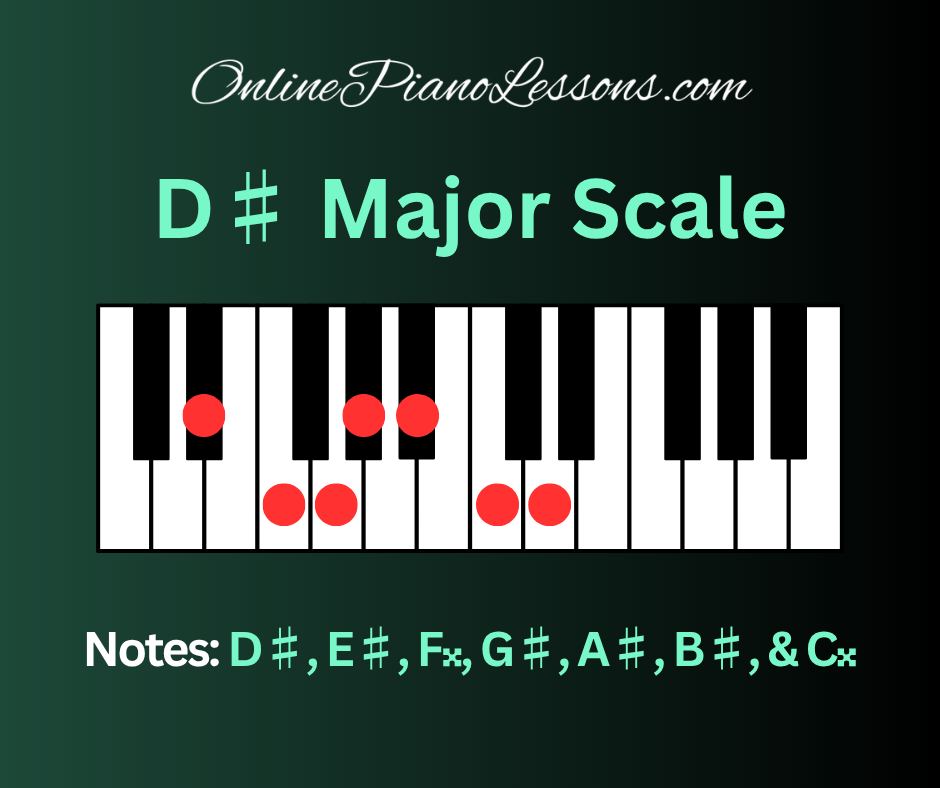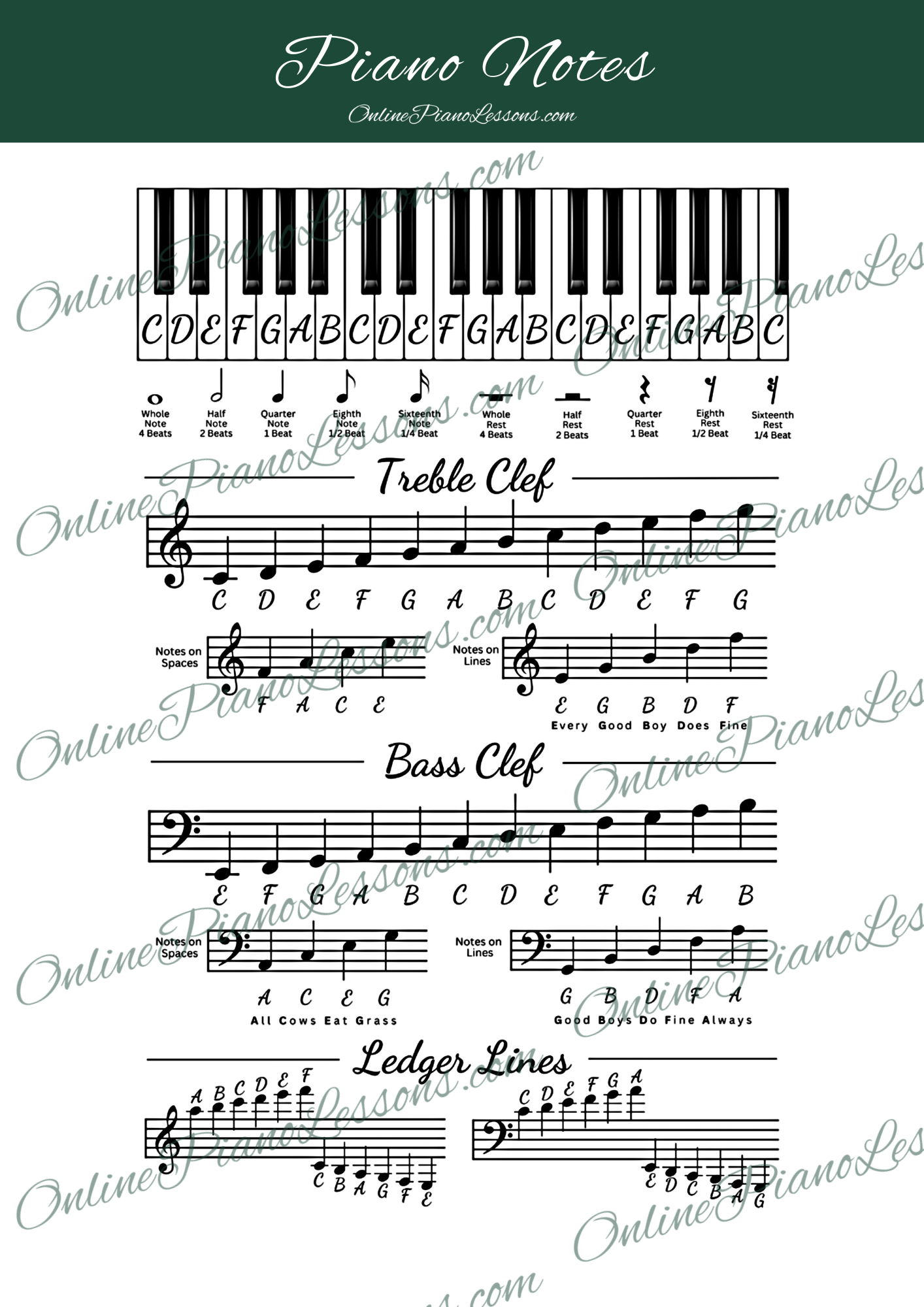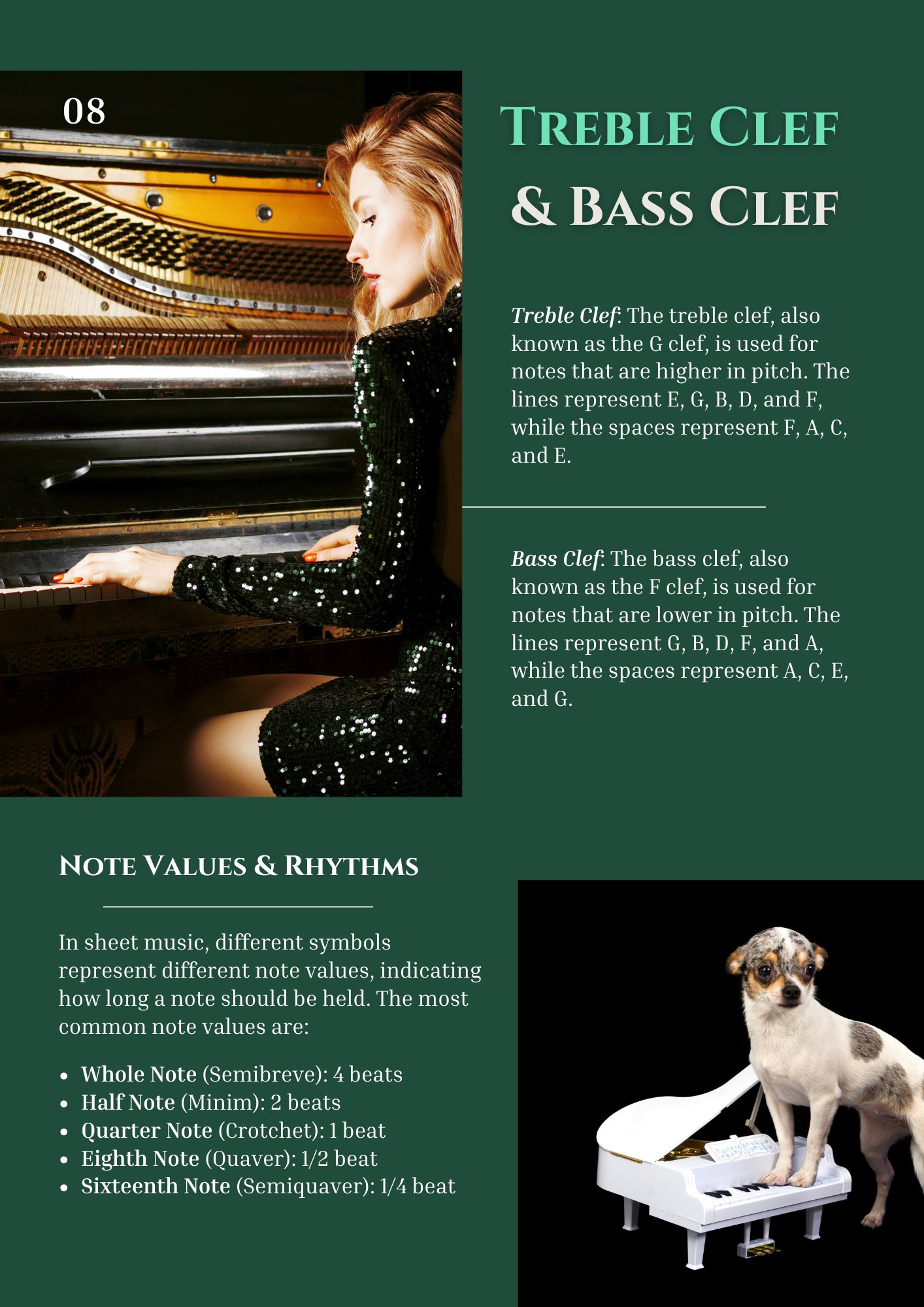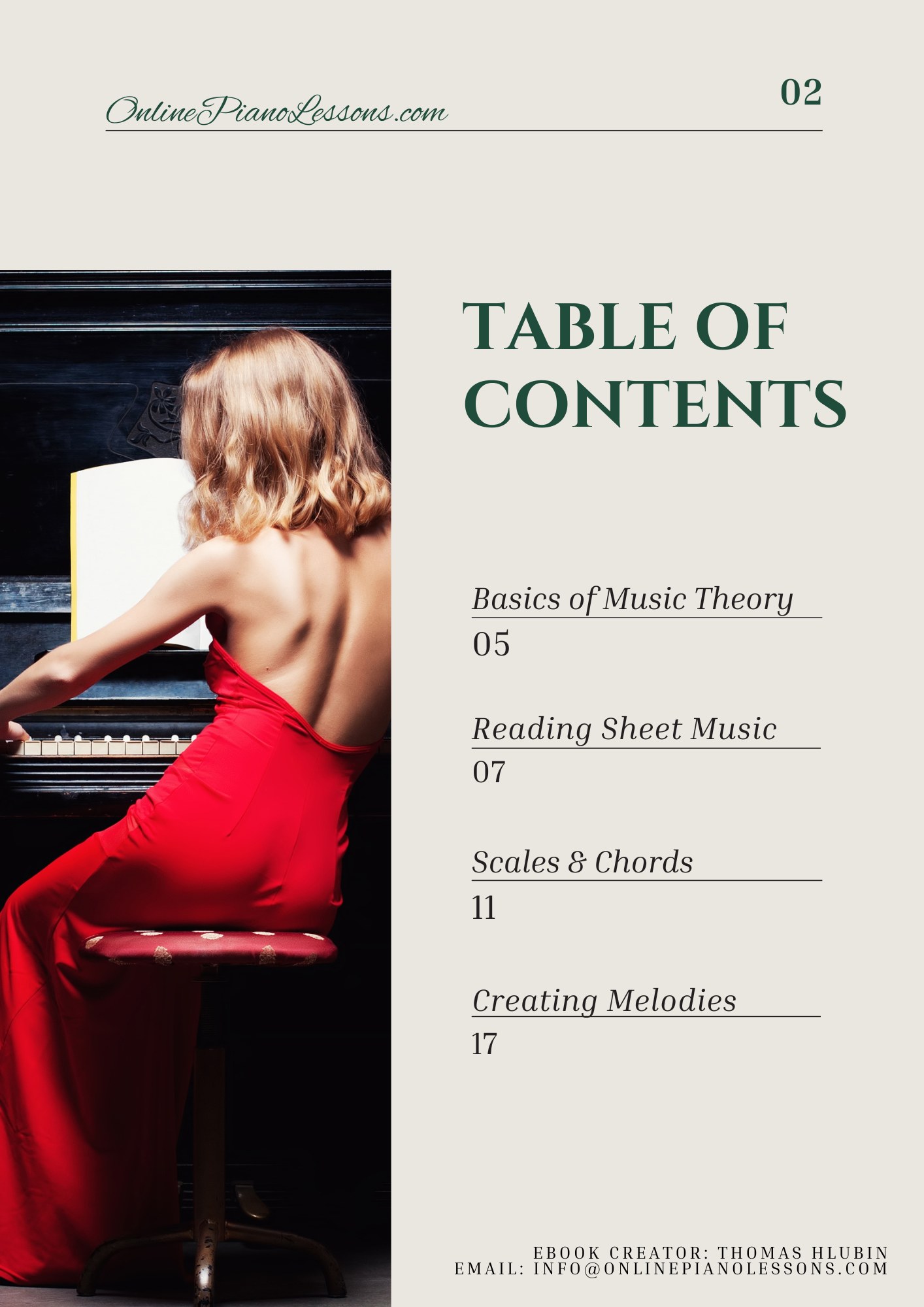
If you’ve ever explored the deeper edges of piano theory, the D sharp major scale is one of those fascinating, rarely discussed keys that can expand both your understanding and your technical skill. While it’s enharmonically equivalent to E♭ major, the D sharp major scale carries its own theoretical importance in music and offers a challenging but rewarding experience on the piano.
Let’s dive into what makes the D sharp major scale unique—how it’s built, how it sounds, and how to play it with ease.
Quick Preview: The D♯ major scale (D♯, E♯, F𝄪, G♯, A♯, B♯, C𝄪) is a sharp-heavy, theoretical key—enharmonically equivalent to E♭ major—that reveals advanced aspects of music theory and keyboard geography. This guide covers how to find and play the D♯ major scale on the piano, its key signature and diatonic chords, practical fingering and practice routines, and why studying this scale strengthens your harmonic and notational fluency.
What is the D Sharp Major Scale?
The D sharp major scale (also written as D♯ major scale) is a seven-note diatonic scale that follows the standard major scale pattern of whole and half steps (W–W–H–W–W–W–H).
When constructed from D♯, this pattern produces the notes:
D♯, E♯, F𝄪, G♯, A♯, B♯, C𝄪, and D♯
This means that the D sharp major scale contains several double sharps (F𝄪 and C𝄪), which can make it visually intimidating on the staff, but theoretically, it’s perfectly valid and aligns with the rules of scale construction.
The D♯ major scale is the theoretical key signature that includes six sharps and one double sharp—making it one of the most complex-looking keys in all of music theory.
How to Find the D Sharp Major Scale on the Piano
Even though the D♯ major scale looks complex on paper, it’s easier to play than you might think. On the piano, it’s simply one semitone above D major and one semitone below E major.
Here’s how to find and play the D sharp major scale on piano step-by-step:
- Start on D♯ — This is the black key immediately to the right of D.
- E♯ (which sounds like F) — Move up one whole step.
- F𝄪 (which sounds like G) — Another whole step up.
- G♯ — A half step higher from F𝄪.
- A♯ — A whole step higher than G♯.
- B♯ (which sounds like C) — Another whole step up.
- C𝄪 (which sounds like D) — Another whole step.
- Return to D♯ — The octave above your starting note.
So, even though the notation may involve double sharps, the physical keys on the piano are simply the same as playing E♭ major—they sound identical.
What the D Sharp Major Scale Sounds Like
The D♯ major scale sounds bright, vivid, and rich—just like any other major scale. However, because it’s enharmonic to E♭ major, the auditory experience is the same. The difference lies entirely in the notation and the theoretical context in which it’s used.
Some composers may prefer the D♯ major scale for notational reasons when modulating from sharp keys like B major or G♯ minor. Pianists might encounter it when analyzing complex compositions or transposing passages between keys.
Even if it’s not a scale you’ll see often, playing and hearing it helps develop a stronger grasp of enharmonic relationships and theoretical accuracy on the piano.
Key Signature and Theoretical Notes
The D♯ major scale is notable for having one of the most complex key signatures in Western music. It contains:
Six sharps and one double sharp.
Specifically, the key signature includes:
F♯, C♯, G♯, D♯, A♯, E♯, and B♯ — with F♯ and C♯ elevated again to F𝄪 and C𝄪 in the scale.
Because of its complexity, many composers choose to write music in the enharmonic equivalent of E♭ major, which has only three flats (B♭, E♭, and A♭). However, when dealing with modulation or theoretical exercises, understanding the D♯ major scale can be extremely helpful.
Scale Degrees and Chord Construction
Each note of the D sharp major scale functions as a scale degree with a specific role. Here are the degrees and their corresponding chords:
- D♯ (I) – D♯ major: D♯–F𝄪–A♯
- E♯ (ii) – E♯ minor: E♯–G♯–B♯
- F𝄪 (iii) – F𝄪 minor: F𝄪–A♯–C𝄪
- G♯ (IV) – G♯ major: G♯–B♯–D♯
- A♯ (V) – A♯ major: A♯–C𝄪–E♯
- B♯ (vi) – B♯ minor: B♯–D♯–F𝄪
- C𝄪 (vii°) – C𝄪 diminished: C𝄪–E♯–G♯
When you play these chords on the piano, you’re technically using the same keys as the E♭ major scale—but understanding the theoretical spelling helps you see how harmony functions in sharp-based notation.
Playing the D♯ Major Scale on Piano
The best fingering for the D sharp major scale on piano follows similar logic to other black-key scales like G♭ major and D♭ major. Here’s the standard fingering:
Right hand: 2 – 3 – 1 – 2 – 3 – 4 – 1 – 2
Left hand: 3 – 2 – 1 – 4 – 3 – 2 – 1 – 3
These fingerings make use of the natural curvature of your hand on the black keys, allowing smooth transitions between sharps. Always practice slowly and make sure your thumb passes under the correct finger cleanly when ascending or descending.
Practice Techniques for the D Sharp Major Scale
Because the D♯ major scale has several sharps and double sharps, you’ll want to practice it slowly until the muscle memory is solid. Try these tips:
- Hands-Separate First: Begin by practicing one hand at a time, ensuring accurate finger placement.
- Count Aloud: Counting keeps your rhythm steady and reinforces awareness of each scale degree.
- Use Rhythmic Variations: Try long-short or staccato-legato patterns for better articulation.
- Play In Thirds And Sixths: This builds dexterity and ear coordination.
- Arpeggio Drills: Practice the D♯ major arpeggio (D♯–F𝄪–A♯) to strengthen your harmonic sense.
- Contrary Motion: Play both hands moving outward and inward to challenge your coordination.
Practicing the D♯ major scale regularly on the piano will make all sharp keys feel more natural over time.
Common Chord Progressions in D Sharp Major
Although the D♯ major scale isn’t commonly used in written music, you can still apply standard major key progressions for practice:
- I – IV – V – I: D♯ – G♯ – A♯ – D♯
- ii – V – I: E♯m – A♯ – D♯
- I – vi – IV – V: D♯ – B♯m – G♯ – A♯
- iii – vi – ii – V: F𝄪m – B♯m – E♯m – A♯
Try playing these progressions on the piano both in root position and with inversions for a smoother, more musical flow.
Modes of the D♯ Major Scale
Every major scale produces seven modes, and the D♯ major scale is no exception. Here are the modes derived from it:
- D♯ Ionian (major)
- E♯ Dorian
- F𝄪 Phrygian
- G♯ Lydian
- A♯ Mixolydian
- B♯ Aeolian (natural minor)
- C𝄪 Locrian
Exploring these on piano will enhance your improvisational skills and give you deeper insight into tonal relationships across different modal contexts.
Theoretical and Practical Use
While you may not see the D sharp major scale in many printed piano scores, understanding it offers immense theoretical value. It trains your brain to think in sharps and double sharps, strengthening your overall musical literacy.
Composers occasionally use D♯ major in advanced harmonic modulations—especially in works that move by fifths or lead into sharp-heavy regions like A♯ minor. Pianists studying advanced harmony, analysis, or composition should absolutely be familiar with it.
Tips for Memorizing the D Sharp Major Scale
- Link it to E♭ major: Remember that the finger pattern and sound are the same; only the notation differs.
- Say the note names aloud: D♯, E♯, F𝄪, G♯, A♯, B♯, C𝄪, D♯. Repetition builds memory.
- Visualize sharps as steps: Each note except D♯ itself is a sharp or double sharp—this pattern reinforces the sharp-based thinking.
- Write it out: Writing the scale on staff paper helps connect finger, sound, and notation visually.
Final Thoughts
The D sharp major scale (D♯ major scale) might be among the least-used keys in practical piano music, but it holds tremendous value for pianists who want to fully understand key signatures, enharmonic equivalents, and advanced notation.
Learning the D♯ major scale trains both your ear and your intellect—it challenges you to think beyond comfort zones while reinforcing foundational theory. Whether you’re analyzing compositions, practicing scales, or composing in digital software, mastering the D♯ major scale gives you fluency across every tonal landscape.
FAQ
Q: What notes are in the D sharp major scale?
A: The D♯ major scale consists of D♯, E♯, F𝄪, G♯, A♯, B♯, and C𝄪.
Q: Is D sharp major the same as E flat major?
A: Yes, they sound exactly the same on the piano but are written differently. D♯ major uses sharps, while E♭ major uses flats.
Q: Why is the D sharp major scale rarely used?
A: Its key signature is complex, featuring six sharps and one double sharp, which makes reading and writing in it cumbersome. Most composers opt for E♭ major instead.
Q: What chords are in the D sharp major scale?
A: The primary chords are D♯ major (I), G♯ major (IV), and A♯ major (V), with diatonic extensions for ii, iii, vi, and vii°.
Q: How do I practice the D sharp major scale on piano efficiently?
A: Use slow, deliberate fingering; practice in different rhythms and articulations; and focus on accuracy before speed. Playing hands separately helps solidify muscle memory.





 Hi, I'm Thomas, Pianist Composer,
Hi, I'm Thomas, Pianist Composer,  I love playing piano, creating new melodies and songs, and further developing my online piano course and making updates/additions to my site OnlinePianoLessons.com!
I love playing piano, creating new melodies and songs, and further developing my online piano course and making updates/additions to my site OnlinePianoLessons.com!  Now that is what I call fun!
Now that is what I call fun!





